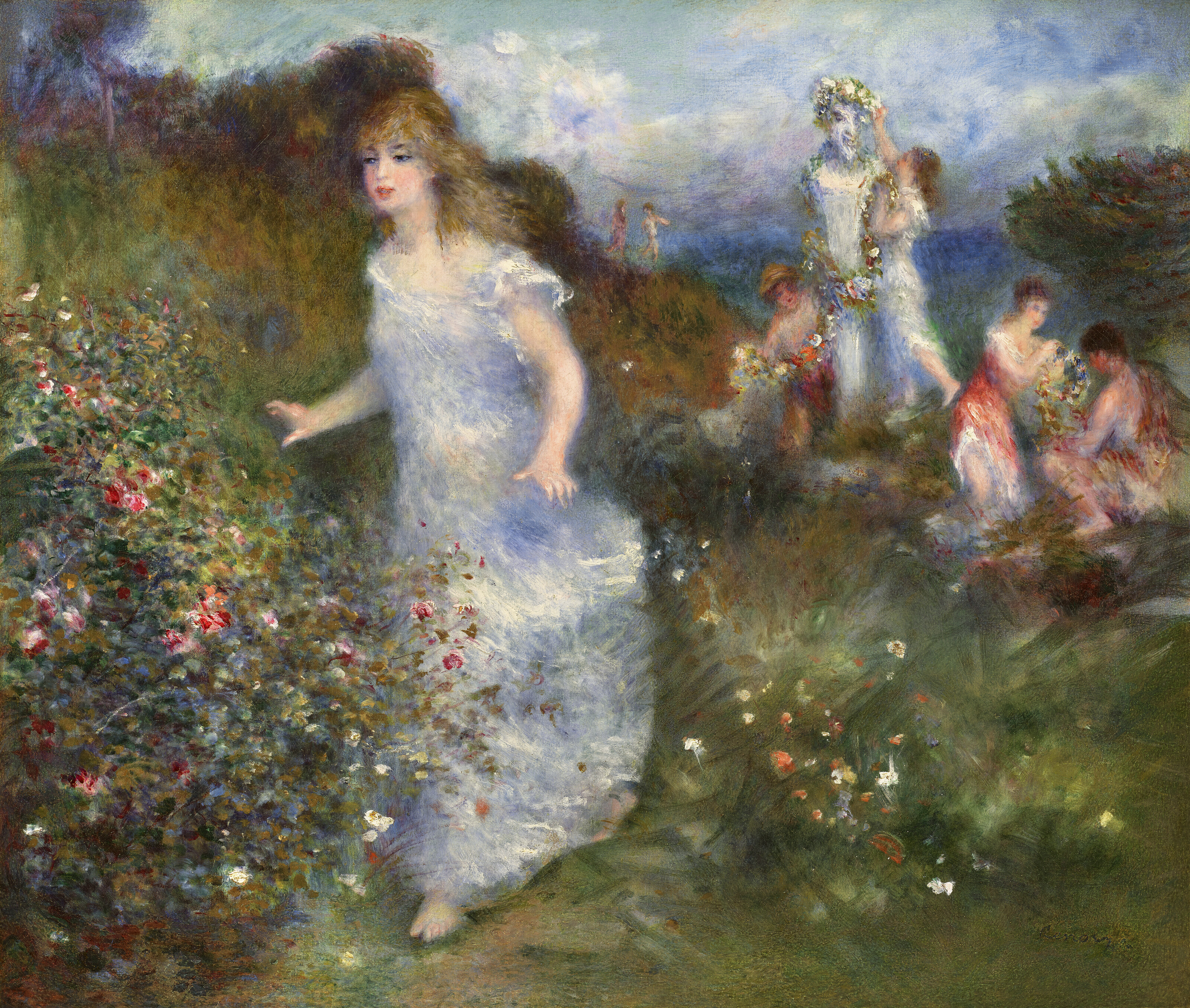Renoir’s Jeune fille (L'Eté) is a pretty pastel fantasy: a plump brunette wears a breezy white chemise and a fashionable straw hat, festooned with a thick blue ribbon.
This Impressionist goddess of summer, nestled in a flowering meadow, has adorned her hat with freshly plucked blooms.
She leans towards the viewer with a sweet, languid look, her lips gently parted.
The sensuality of her expression is underscored by the casual exposure of her bare shoulder, arms and décolleté.
Pierre-Auguste Renoir | Jeune fille (L’Eté), 1880 | Christie's








